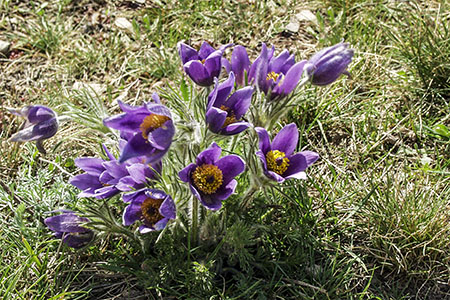|
|
What blooms there?
The quartzite ridge of Hunsrück along with the Nahe, Mosel, and Rhine ravines
account for the fact that the Rhineland-Pfalz region is one of the states
in Germany with the greatest abundance of rocks. Due to the special microclimate
of various locations in the Nahe Valley and Hunsrück plants and plant communities
have evolved here over the millennium, some of which are only found in these
locations. For example, there is the Sponheim saxifrage (Saxifraga
sponhemica), special types of Killearney fern (Trichomanes speciosum),
as well as several rare types of rock moss. These unique species, which
have evolved locally in the extremely delicate ecosystem of the region, are,
for the most part, protected in nature reserves today, whose task it is "to
preserve rare and threatened wild plants and plant communities". At least
as interesting and attractive are the countless wild flower species, which
you meet at every turn on walks or bike tours in the Nahe Valley and Hunsrück.
Such wild flowers, with their varying colours, forms, and scents, give their
particular, unmistakable impression at any time of year. This, in turn, allows
the alert visitor to the region the possibility of consciously witnessing
all the nuances of the seasonal changes. It is worth noting that a third of
the approximately 3,000 wild plants in Germany are listed as endangered on
the Red List. Awareness of this and helping to protect them is certainly worthwhile.
|

|

Literature
Pocket guides are helpful for identifying wildflowers, such as:
B. Kremer: Wildblumen erkennen und bestimmen. Mosaik Verlag München, 2001
The ommon pasque flower (Pulsatilla vulgaris) grows on dry grassland,
in dry forests and bushes and needs warm, calcareous soil.
|

|




